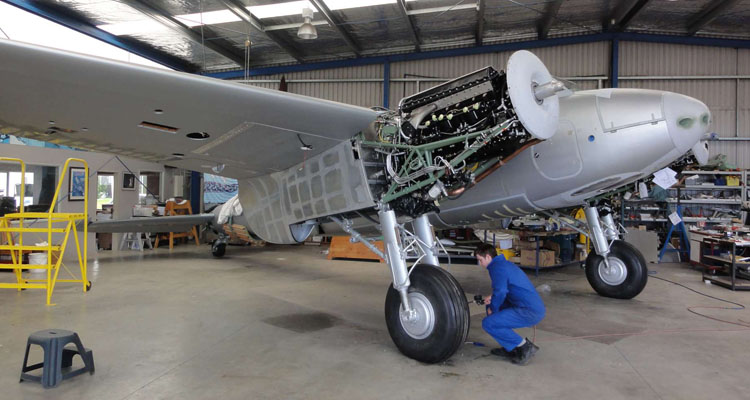The de Havilland Mosquito is one of the very last of the major World War II types not represented by a flying restoration or accurate replica
The current holy grail of warbird restoration is an airworthy de Havilland Mosquito, one of the very last of the major World War II types not represented by a flying restoration or accurate replica. Mosquitos were once plentiful, but other than the 30-odd parked in museums and non-flying displays, all have succumbed to the inevitable deterioration of their wood airframes and, particularly, the glue used to fabricate them. The last flying example crashed fatally at an airshow in Manchester, England, in July 1996.
A Mosquito airframe built from scratch by New Zealander Glyn Powell seems to be well in the lead in this race for the sky; after all, Powell had been working on the concept of creating an essentially new Mosquito for some 22 years. The current airplane is owned by wealthy American warbirder Gerald Yagen, whose enormous collection is housed at his Military Aviation Museum and associated maintenance facility, The Fighter Factory, both in Virginia Beach, Va. The Powell-built Mosquito is now being fitted out by Avspecs, a highly regarded New Zealand restoration shop that is doing all the metal-related work. Yagen says the airplane is “about 80 percent done” and should fly later this year. (Note, however, that a popular rule of thumb among aircraft restorers and homebuilders is that “the last 10 percent is 50 percent of the work.”)
It should be easy to build a wooden airplane, right? EAAers do it all the time. Actually, it would be a far simpler restoration if Mosquitos were aluminum, for a big part of the job consists of building the large fuselage molds, the tooling and the extremely precise wing and attachment jigs that must be in place before a rebuild can really begin. All of de Havilland’s jigs and tools had been scrapped in the early 1950s, so the Mosquito literally had to be reinvented.
Yagen’s airplane is built around the dataplate and many of the metal parts of a Mosquito originally manufactured in Canada in 1946, so it is officially a restoration and not a replica, though Yagen says, “More than 50 percent of the airplane is new.” By the time he bought it, the airframe (including 50,000 small brass screws) had deteriorated to a state that would make “firewood” a compliment, yet remarkably, that Mosquito had very little air time logged: It had been delivered from the factory straight to storage.
Yagen plans to paint the Mosquito in the colors of “one of the airplanes that flew the Amiens raid.” Though he hasn’t determined exactly which one, we’re guessing it will be a Royal New Zealand Air Force No. 487 Squadron FB Mk.VI that took part in that famous 1944 prison break, in tribute to its rebirth in New Zealand. (Yagen’s airplane is an FB Mk.26, which simply means a Mk.VI fighter-bomber built in Canada.) How much will it be worth once it’s flying? Yagen has no idea, though he says it’s not for sale, “and we have more money in it already than we do in our B-17.”





